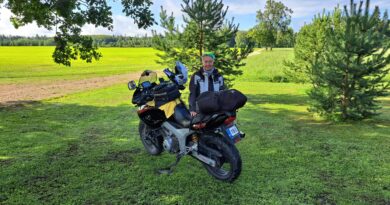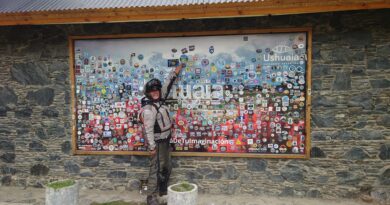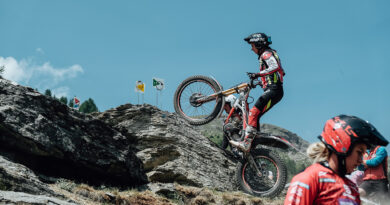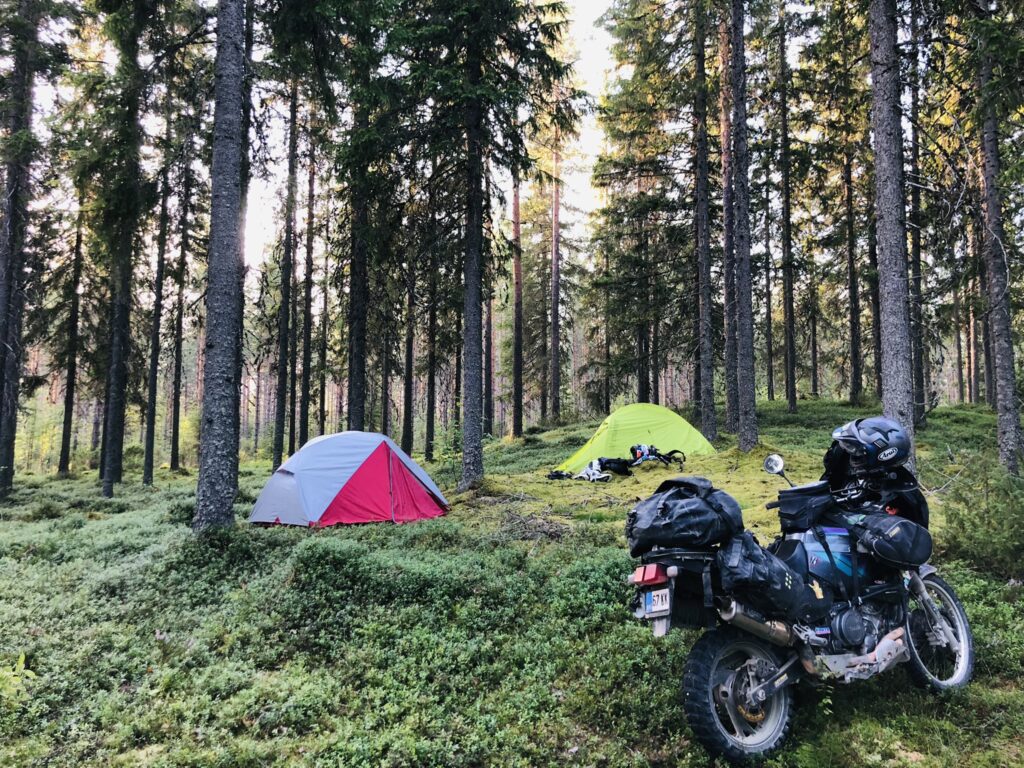
How to Pack All the Gear for an Off-Road Trip as Efficiently as Possible and What to Pack?
Off-road enthusiast and motorcycle adventurer Kristjan Karumets, also known as Kurisookaru or simply Karu, shared his accumulated wisdom with Matka TV on packing gear for a motorcycle trip, choosing the right equipment, and deciding which tools to bring along.
Pictures from private collection
Karu has been motorcycling for more than fifteen years: Scandinavia, Europe, Russia, Mongolia, the Urals, Armenia, Georgia, and the list could go on. He has experienced civilization and days entirely outside of it, mountains and steppes, deserts, and cold lands. The man has amassed a wealth of experience, allowing him to share valuable tips with others.
Is there any difference between packing gear for a road bike or an off-road trip? “Yes, there is!” confirmed Karu. He pointed out that road bikers often concentrate the bulk of the weight at the back of the motorcycle and frequently relatively high up. This can make riding dangerous, as the front of the bike becomes very light and affects handling, especially on uphill climbs. Karu admitted that in his younger days, he made this mistake, losing control on the steep streets of Genoa because the weight was too far back and the front too light.
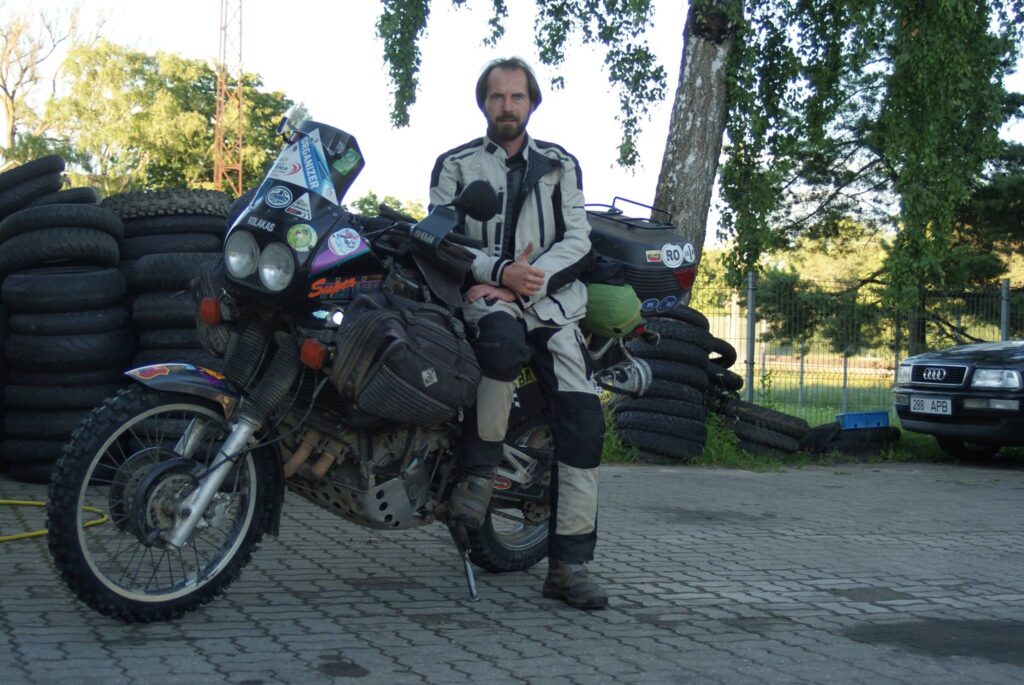
Nowadays, motorcycle adventurer uses Kriega textile bags. All his sleeping gear—tent, sleeping bag, and sleeping mat—fits into one 18-liter side bag.
When heading off-road with his bike, it is wiser to use soft textile bags rather than plastic cases, which can break if they fall. Karu emphasized that the bike’s weight plays a crucial role on off-road trips, and a textile bag is lighter than a plastic case. “I have fallen with them textile bags, but they have held up so far. The advantage of a metal case is that it is more theft-resistant but heavy,” said Karu. Additionally, a narrower load, with soft bags as wide as the handlebars, makes it easier to maneuver through traffic if needed than with wide cases.
Spare shoes and other clothes are on the other side of the side bag. Next to the tank, in the side bag, is a pot and cooking utensils. On the other side, in a similar bag, are the stove and gas. These are half-empty so that essentials for dinner can be bought from the store.
The most important thing is to keep your load as low as possible. “The reason I also use bags next to the tank is to keep the balance and not place all the weight at the back,” said Karu. On an off-road uphill, the front of the bike would immediately rise if the weight isn’t distributed to the front and stays only at the back.
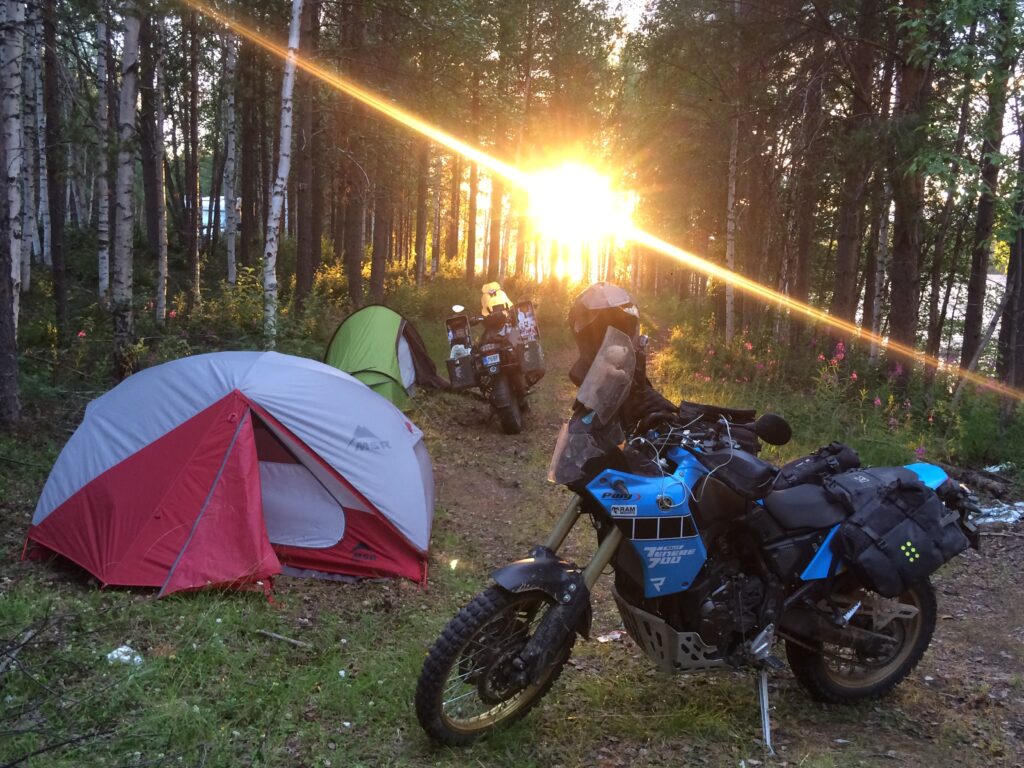
When traveling to colder places where more outerwear is needed, Karu attaches a 40-liter top-loading bag with outerwear to the back of the bike behind the rider. This bag is often half-empty during the ride but provides extra space for carrying necessary food and drink from the store.
The last item in use is a tank bag, where he keeps the most handy items like a wallet, camera, and gummy candies.
If you find yourself in a city and want to enjoy urban attractions, Karu has a tip for ensuring security. He covers his bike and gear with a rain cover so that nothing catches anyone’s eye. “If it’s a real thief, there’s no escape anyway, but hiding things from a petty thief might keep them from tampering with it,” Karu suggested. A bonus of the rain cover is that by covering the bike and gear overnight, everything stays dry in case of rain.
One way to secure your belongings when going for a walk in the city is to thread a cable through your helmet, jacket sleeves, and pants and lock it on your bike. This should deter a casual thief.
Before embarking on a long trip, Karu recommends doing a test trip close to home, including trial camping, to see how all the packing and gear management works for you and if anything needs rethinking. “An oil change, chain set inspection, brake pads, and wheel bearings check is necessary before a long trip.”
When buying camping gear, prefer items that are as small, light, and durable as possible. “You can have the best sleeping bag, but your sleeping mat shouldn’t let the cold through. I have been using a Therm-A-Rest air mattress for over ten years, and it withstands freezing temperatures well,” Karu explained. Since he no longer wants to inflate it manually, he found a very affordable small mattress pump on a battery that also works well for blowing up the campfire or keeping mosquitoes away.
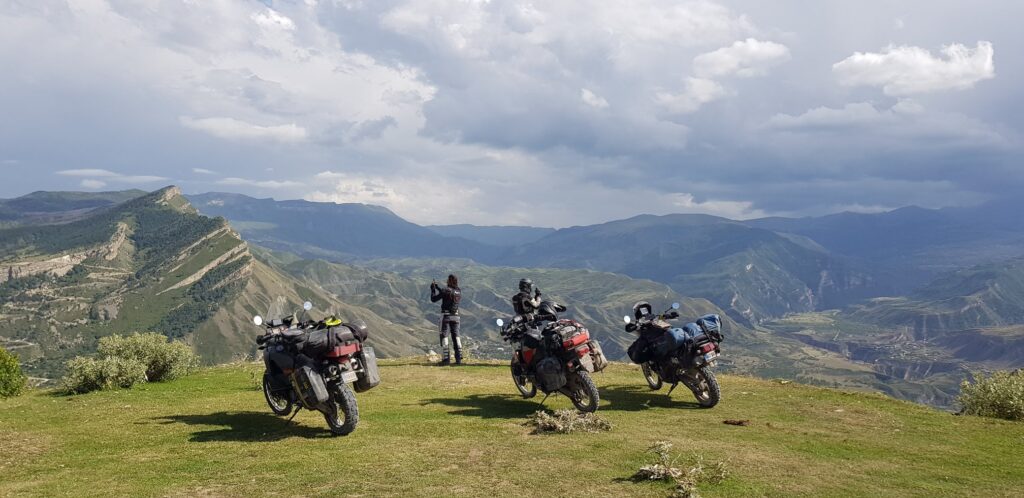
When choosing a sleeping bag, pay attention to the nighttime temperatures at your destination. There are also inner layers sold separately for sleeping bags, which provide extra warmth in freezing temperatures or can be used alone in warm climates to protect against insects. Note that even when traveling to warm places, temperatures can drop significantly at night if you sleep in the mountains. Even in the desert, nighttime temperatures can fall to zero. According to Karu, sleeping well on a trip is crucial because a tired traveler is not a happy traveler.
Another important choice is the tent, which should allow air circulation, be spacious enough to feel comfortable and store your gear if necessary.
For more comfortable evening camping, there are also ultra-compact camping tables and chairs that can be packed on a motorcycle. Even foldable dishes are available that won’t break if dropped. There is a wide range of different stoves, pots, and pans for cooking.
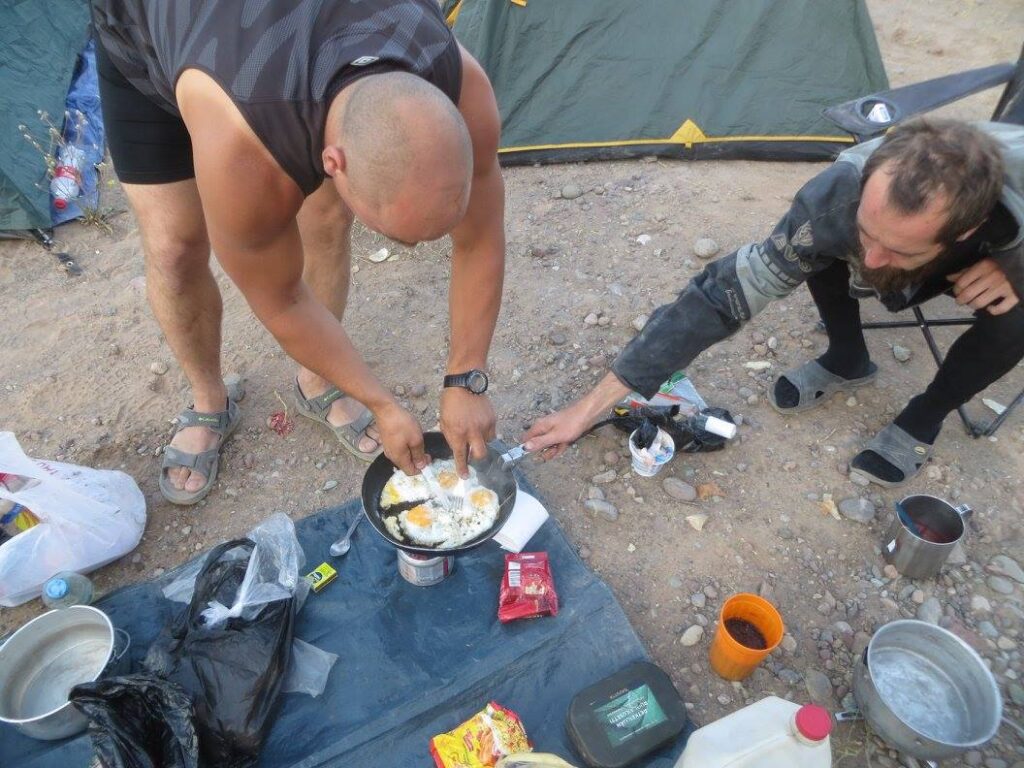
In addition to personal gear, you must bring equipment to care for your motorcycle. For a tube-type tire, this includes a tube repair kit, new tubes, and levers to remove the tire. A compressor is needed to refill the tire. For a tubeless tire, bring a string-type repair kit. With the Yamaha Tenere 700, tools and spare tubes fit neatly under the seat.
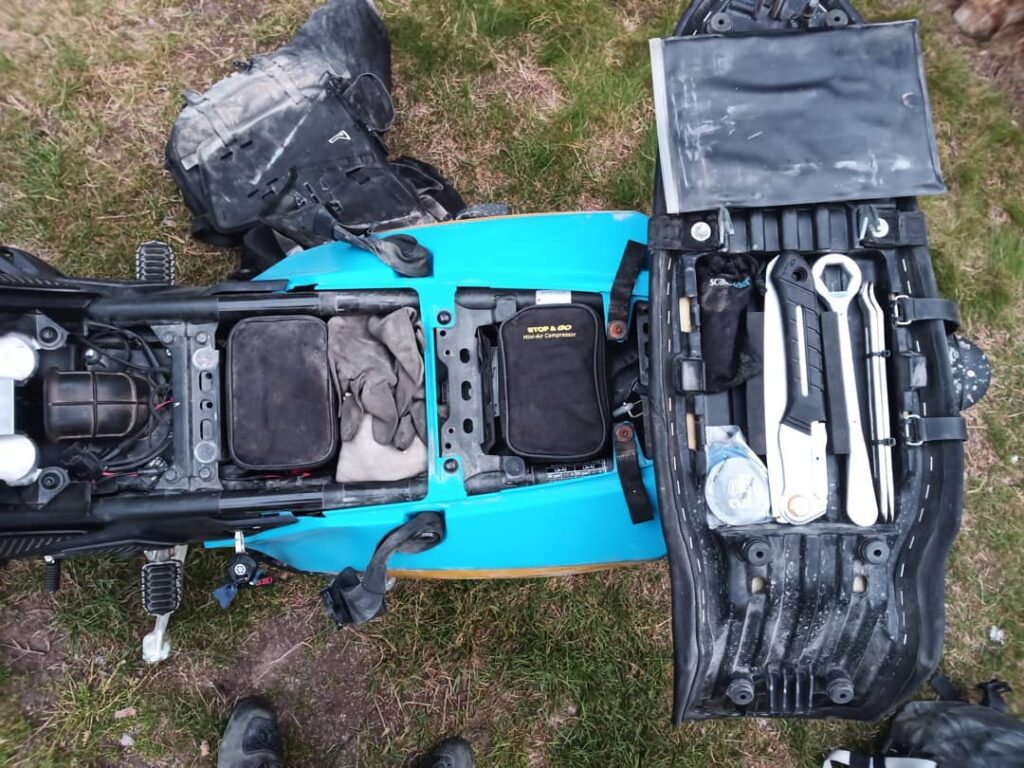
And what fits under that seat? A compressor, tube repair kit, clutch cable repair kit, work gloves, moisture-resistant tape, throttle cable repair kit, compact tool kit, cable ties, spare brake pads, spare spokes, Seal Mate fork seal cleaner, combination wheel wrench, and lever, two additional levers, and folding hand saw for cutting wood for the campfire or removing obstacles from the path.
It seems we’ve covered most of the topics, and now there’s nothing left but to pack your things on the motorcycle and head out on your adventures!

